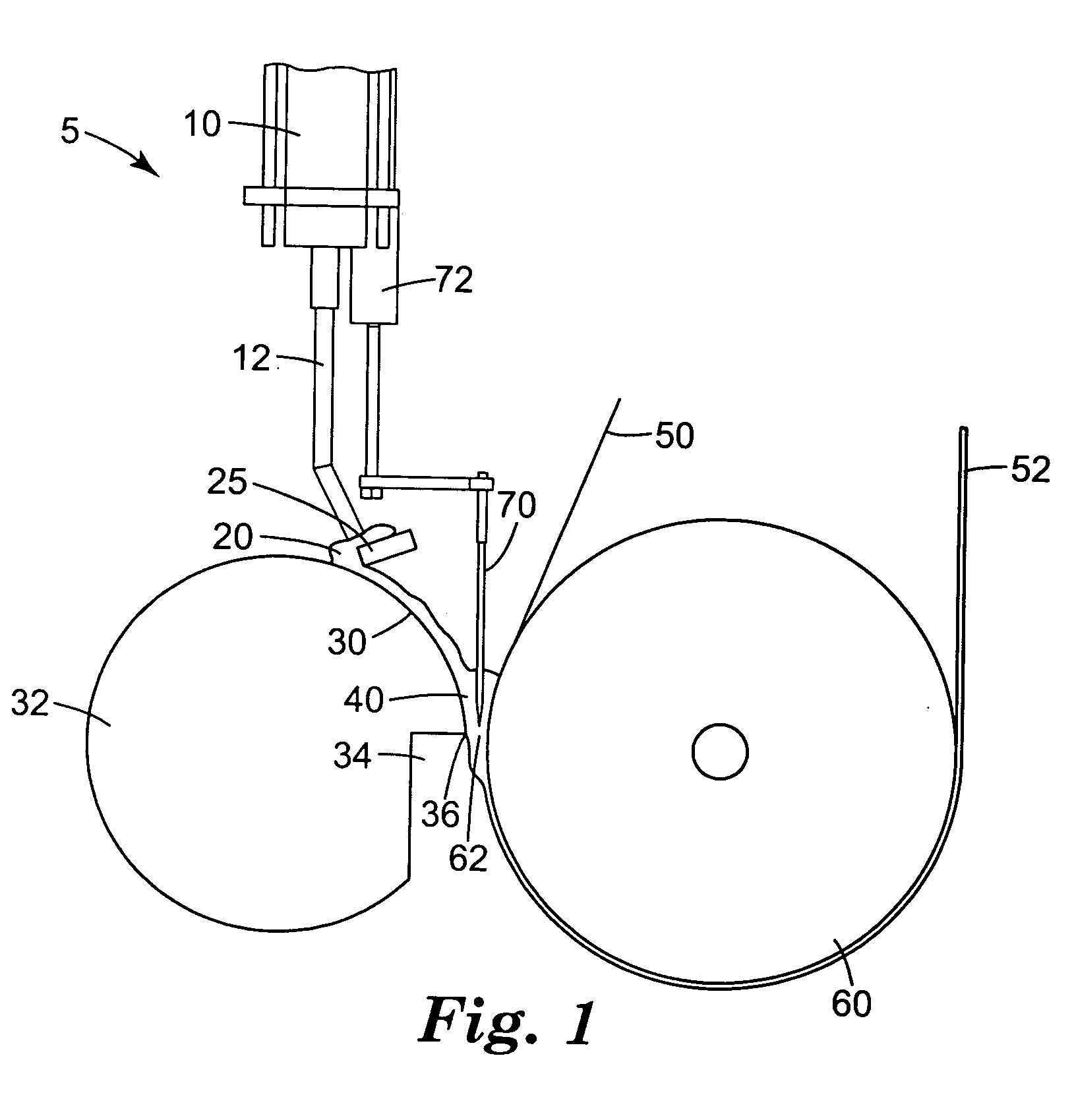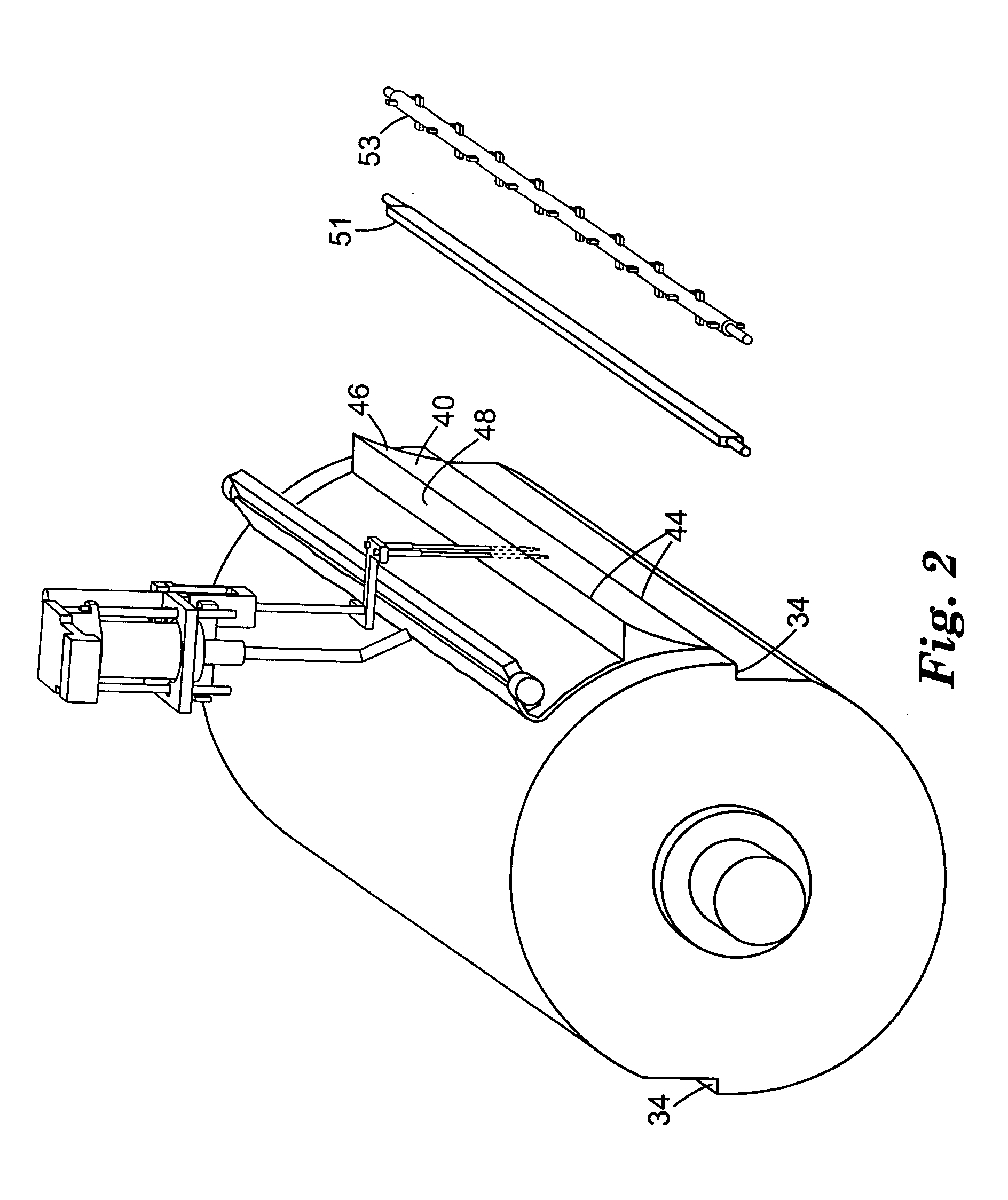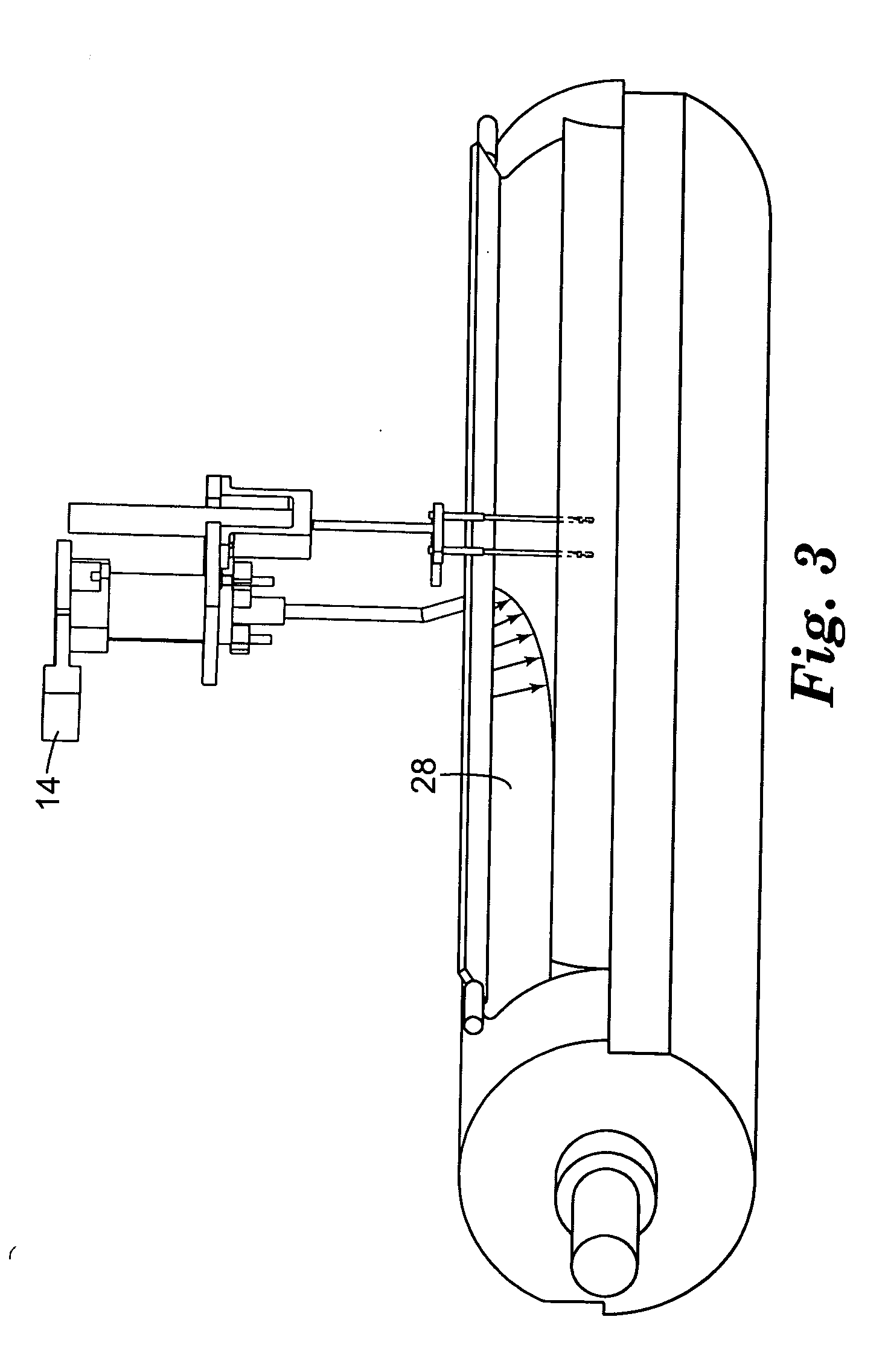Coating apparatus and methods of applying a polymer coating
a coating apparatus and polymer technology, applied in the field of coating apparatus, can solve the problems of disrupting the coating bank that occupies the area between the dispersive surface and the receiving support, and achieve the effects of strong and less flexible coating, unsuitable storage or pumping, and stability and safety
- Summary
- Abstract
- Description
- Claims
- Application Information
AI Technical Summary
Benefits of technology
Problems solved by technology
Method used
Image
Examples
example 1
[0072] A Urethane Processing Machine was obtained from Max Machinery, Inc., Healdsburg, Calif. This machine consisted of a blend cart, main cart, fluid transport lines, and a pin mixer attached to rails, on which the mixer oscillated. Some aspects of this machine are similar to those shown on the Max Machinery web site, www.maxmachinery.com (e.g., Linear Guide Systems). Additional information regarding the machine may be found in "Urethane Processing System: Instruction Manual," publication no. MM 600-000-350 (Rev. 1 / 98) Max Machinery, Inc. Various of the components that were used in making the coated web are illustrated in FIGS. 1-6. The pin mixer had inlets connected to five separate fluid transport lines from tanks A-E. Lines A and B are combined in a single injector, and lines C, D and E are combined in a single injector just prior to injection into the pin mixer.
[0073] The blend cart contained Tanks F, G, H, and I (see Table 1). The blend cart metered and blended four component...
PUM
| Property | Measurement | Unit |
|---|---|---|
| temperatures | aaaaa | aaaaa |
| weight % | aaaaa | aaaaa |
| weight % | aaaaa | aaaaa |
Abstract
Description
Claims
Application Information
 Login to View More
Login to View More - R&D
- Intellectual Property
- Life Sciences
- Materials
- Tech Scout
- Unparalleled Data Quality
- Higher Quality Content
- 60% Fewer Hallucinations
Browse by: Latest US Patents, China's latest patents, Technical Efficacy Thesaurus, Application Domain, Technology Topic, Popular Technical Reports.
© 2025 PatSnap. All rights reserved.Legal|Privacy policy|Modern Slavery Act Transparency Statement|Sitemap|About US| Contact US: help@patsnap.com



